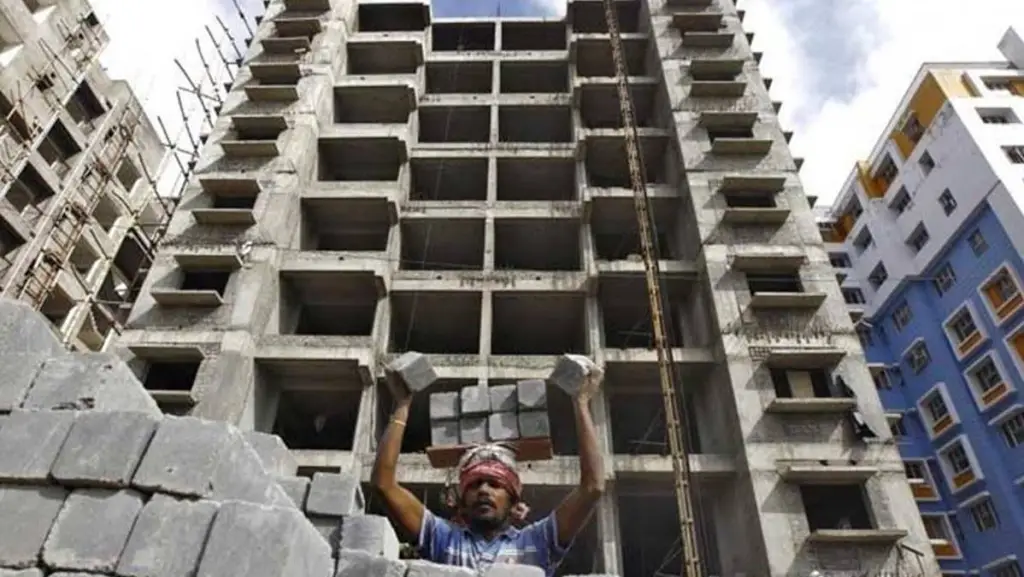By Ramnath Krishnan
The credit quality of India Inc. improved in H1 FY2023, building on the momentum seen since the beginning of the previous fiscal, as the scars of the pandemic started to fade. Real estate, textiles, financials, engineering, construction, and roads sectors, spanning a variety of the crucial non-agricultural sectors of the economy, accounted for almost half of the total upgrades by ICRA in H1 FY2023, while constituting a relatively smaller one-third of the rated portfolio.
While the upgrades were concentrated in the aforementioned six sectors, each of these reflected a specific set of sectoral drivers. For instance, a majority of upgrades in the real estate sector were for entities engaged in the leasing of commercial office space or warehousing assets, with their credit profiles benefitting from project completions, healthy leasing activity, and/ or loan refinancing at more favourable terms.




The financial sector saw upgrades for several small to mid-sized NBFCs with a loan book ranging between `500 crore to `10,000 crore, showing a track record of consistent business growth while maintaining/improving asset quality and capitalisation metrics.
The credit profile of several engineering and construction entities is expected to benefit from their healthy order books and steady execution pace, supporting upgrades. The order books of construction entities are benefitting from the public investment projects in irrigation, roads, water supply, underground tunnelling, and metro works, and investments in other niche areas like data centers.
In the roads sector, a variety of annuity-based and hybrid annuity-based projects were upgraded driven by reasons such as reduction in execution and funding risks following project completions, and timely commencement of the semi-annual annuity payments from the concession authority, mollifying revenue risks.
In another positive trend, ICRA’s rating downgrade rate eased to 5% in H1FY23 from 6% in FY2022, much lower than the past 5-year average of 12% and the past 10-year average of 9%. The business rebound after the pandemic, limited capex and hence restrained fresh term borrowings, and organic reduction in the existing balance sheet debt kept the incremental downside credit risks low. Moreover, there were only five defaults in our portfolio in the recent half-fiscal, compared with as many as 42 in FY22 and 44 in FY21.
ALSO READ Impact of China’s realty market on the Indian real estate
The above trends highlight India Inc’s resilience in terms of maintaining and even strengthening its credit quality, against the backdrop of various exogenous factors such as geopolitical conflicts, supply chain disturbances, volatile energy prices, and monetary tightening across the world.
Separately, RBI data indicates that consumer confidence saw a further uptick in the September 2022 round. If the correction in commodity prices seeps into lower inflationary pressures, households’ may experience a greater feeling of wellbeing, encouraging them to spend more freely.
On a sombre note, the excessive rainfall seen in the last few days over various states, which is expected to persist in the early part of this week, does not bode well for the standing crop and a timely kharif harvest. This casts a shadow on the expectations of the crop yield, farmer sector sentiments as well as food inflation, complicating monetary policy decision making in the months ahead.
Additionally, the seasonally adjusted capacity utilisation of the manufacturing sector rose to a 3-year high 74.3% in Q1 FY23 from 73.0% in Q4 FY22. This is close to the threshold of 75%, after which capacity expansion typically gathers pace. However, data collated by the CMIE offers a contrasting trend. As per the CMIE, new investment proposals dipped in Q2FY23, while remaining higher than the level seen in Q3FY22. On an encouraging note, the share of the private sector in total announcements remains elevated.
That brings us to government capex, a healthy pace of which will be crucial to maintain the growth impetus. The capex of the central government and the aggregate capital outlay of the state governments is budgeted to rise quite sharply in FY23. In the early part of the year, the growth in the former has starkly outpaced the latter. We are hopeful that execution of state capex will pickup pace after the rainfall eases in the post monsoon months.
Growth of most high frequency indicators related to the non-agricultural sectors has moderated in Q2FY23 on a normalised base. At the same time, the year-on-year growth of most high frequency indicators improved further in September 2022 relative to August 2022, with the onset of the festive season. This includes coal, electricity generation, fuel consumption, port cargo traffic and rail freight as well as vehicle registrations.
With an improving credit profile of India Inc, capacity utilisation close to the crucial threshold of 75%, and rising confidence levels of households, we are hopeful of a broad-based private sector capacity expansion setting in during H2FY23. This is one of the reasons that underpins our unchanged forecast of a 7.2% GDP expansion in FY23.
(Author is MD and group CEO, ICRA Limited)


















